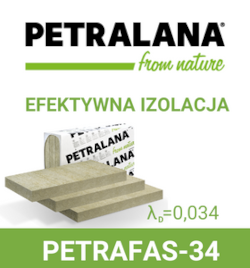dr hab. inż. Jakub Marcinowski, prof. UZ Uniwersytet Zielonogórski,Wydział Budownictwa,Architektury i Inżynierii Środowiska
Autor do korespondencji: e-mail: Ten adres pocztowy jest chroniony przed spamowaniem. Aby go zobaczyć, konieczne jest włączenie w przeglądarce obsługi JavaScript.
DOI: 10.15199/33.2015.09.41
Zmiana temperatury może być istotnym czynnikiem wpływającym na stan wytężenia ścian silosów stalowych, a w pewnych okolicznościach może się stać przyczyną awarii tych konstrukcji. Punkt 5.6 normy obciążeniowej EN 1991-4:2006 zawiera zapisy dotyczące wzrostu naprężeń w elementach konstrukcyjnych silosu spowodowanego różnicą temperatury materiału składowanego i płaszcza silosu. Norma podaje wzór na wzrost parcia poziomego w silosie wypełnionym materiałem sypkim w warunkach pojawienia się różnicy temperatury między ścianami silosu a materiałem składowanym.Wartykule przedstawiono wyprowadzenie tego wzoru oraz dyskusję na temat określenia efektywnego modułu sztywności materiału składowanego EsU. Ilustracją rozważań teoretycznych zawartych w artykule są wybrane przykłady analiz wzrostu wytężenia ściany silosu w efekcie jej ochłodzenia. Rozważono silosy o różnej smukłości oraz różne współczynniki tarcia materiału składowanego o ścianę. Obliczenia wykazały, że gwałtowne ochłodzenie ściany silosu stalowego może skutkować wzrostem parcia poziomego nawet o 27% i w ostateczności awarią.
Słowa kluczowe: silosy stalowe, spadek temperatury, wzrost parcia poziomego, rozwiązanie analityczne.
* * *
Influence of sudden temperature changes on state of effort of steel silos
The temperature change can be an essential factor affecting the state of effort of steel silo walls. In some circumstances it could even be themain cause of the failure of such structures. The clause 5.6 of the load standard EN 1991-4:2006 includes provisions which refer to the stress increase in structural members evoked by the temperature difference between the silo wall and the stored material. The standard presents the formula on increase of horizontal pressure as a result of the temperature difference between the silo wall and the stored material. The derivation of this formula and the discussion on the determination of the unloading effective elastic modulus of the stored solid EsU were presented in this work. Theoretical considerations are exemplified by chosen examples showing the effort increase of the silo wall as a result of its cooling. Silos of different slendernesses and of different coefficients of wall friction were considered. Calculations have revealed that the sudden temperature drop of the silo wall can lead even to the 27% increase of horizontal pressure and consequently to its failure.
Keywords: steel silos, temperature drop, increase of horizontal pressure, analytical solution
Literatura:
[1] PN-EN 1991-4:2006. Eurokod 1. Oddziaływania na konstrukcje. Część 4: Silosy i zbiorniki.
[2] Łapko A. and Prusiel J. A., Analysis of thermal effects in grouped silos of grain elevators, International Agrophysics, 2006, Vol. 20, pp. 301 – 307.
[3] Łapko A., Prusiel J. A., Studies on thermal actions and forces in cylindrical storage silo bins, Volume 10, Handbook of Powder Technology, 2001, pp. 189 – 197.
[4] Carson J. W., Holmes T., Silo failures: Why do they happen? Task Quarterly, Vol. 7, No 4, (2003), pp. 499 – 512.
[5] Timoshenko S. P., Goodier J. C.; Theory of Elasticity. McGraw-Hill Book Company, New York (1970).
[6] PN-EN 1993-4-1:2007. Eurokod 3. Projektowanie konstrukcji stalowych. Część 4 – 1: Silosy.
Otrzymano: 24.07.2015 r.
Materiały Budowlane 9/2015, str 104-106 (spis treści >>)





























